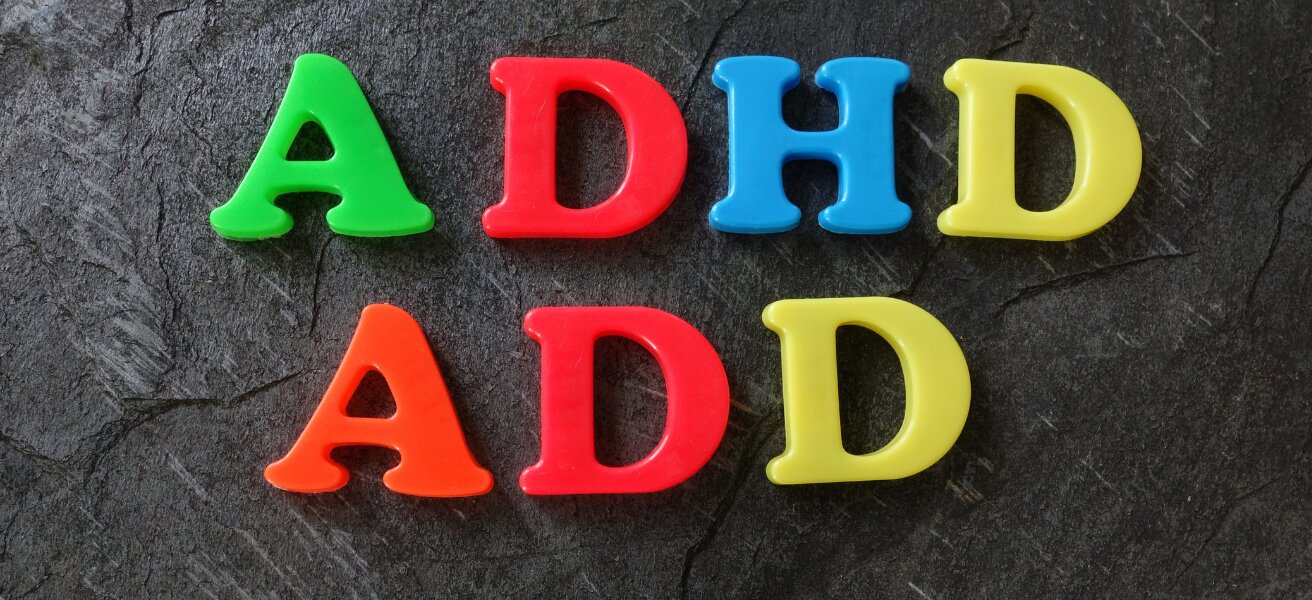Unpacking the Confusion: Why We Say ADHD
Many people frequently use the terms “ADD” and “ADHD” interchangeably, or they believe these are distinct conditions. This confusion is understandable, given the complex and evolving history of this neurodevelopmental disorder. However, “ADD” is an outdated term. Today, “ADHD” is the universally accepted official diagnosis used by medical and mental health professionals across the globe. This persistent misunderstanding often leads to significant implications, affecting how individuals perceive their own challenges, potentially delaying self-acceptance, and sometimes even creating substantial barriers to seeking appropriate professional help and support.
Historically, the formal name for the condition was “Attention Deficit Disorder” (ADD), a term that was officially used from 1980 to 1987. This earlier classification primarily focused on difficulties with attention. However, a significant and defining shift occurred in the diagnostic landscape. Since 1994, “ADHD” has become the widely accepted and official term, reflecting a more comprehensive and nuanced understanding of the condition. This evolution in terminology acknowledges that hyperactivity, alongside inattention and impulsivity, is a significant and often interconnected feature of the disorder, even if it doesn’t manifest overtly in every single individual.
The inclusion of the “H” in ADHD, which stands for “Hyperactivity,” is a key point of this evolution and often a source of public misunderstanding. Its presence in the official diagnosis signifies that an individual can indeed have ADHD even if they do not display obvious, overt hyperactivity. This is a critical distinction, as many associate ADHD solely with restless children.
Presentations of ADHD
The official term, “Attention-Deficit/Hyperactivity Disorder” (ADHD), now serves as an umbrella term. It inclusively covers all three recognized ways ADHD can manifest, known as “presentations,” describing the predominant symptom patterns:
- Predominantly Inattentive Presentation: Often mistakenly called “ADD,” individuals primarily experience difficulties with sustaining focus, organization, attention to detail, and completing tasks, typically without prominent hyperactive or impulsive behaviors. They might appear dreamy, easily distracted by internal thoughts, or struggle with following instructions.
- Predominantly Hyperactive-Impulsive Presentation: Characterized by excessive physical movement, high energy levels, and hasty actions or decisions made without adequate forethought. These individuals might fidget constantly, have trouble staying seated, talk excessively, or interrupt others.
- Combined Presentation: The most frequently diagnosed type, especially in childhood. An individual meets the criteria for both Predominantly Inattentive and Predominantly Hyperactive-Impulsive symptoms.
A Brief History of Understanding ADHD
Our understanding of ADHD has a rich and evolving history. Early descriptions of attention difficulties and restlessness date back to the 1700s. Formal recognition began in 1968 with the DSM-II, which included “Hyperkinetic Reaction of Childhood,” focusing mainly on hyperactivity.
A pivotal moment occurred with the DSM-III in 1980, introducing “Attention Deficit Disorder (ADD) with or without hyperactivity”. This was crucial as it recognized that attention difficulties could exist independently of overt hyperactivity, broadening the diagnostic scope.
In 1987, the DSM-III-R introduced “Attention-Deficit/Hyperactivity Disorder (ADHD)”. This term stuck, and the DSM-IV (1994) reintroduced three specific “subtypes” (later renamed “presentations” in DSM-5). The most recent DSM-5 (2013) refined these criteria, acknowledging that symptoms are dynamic and can change over an individual’s lifespan, with hyperactivity often lessening with age. This continuous refinement ensures diagnostic labels evolve with our understanding.
ADHD Across the Lifespan: Not Just for Kids
While ADHD originates in childhood, it is not something individuals simply “grow out of.” A significant proportion—estimated between 30% and 65%—will continue to meet diagnostic criteria for ADHD into adolescence and adulthood. For many, ADHD is a lifelong condition requiring ongoing understanding and management.
In adults, ADHD symptoms often change. Overt hyperactivity tends to decrease, manifesting as more subtle internal restlessness, fidgeting, excessive talking, or a subjective feeling of being “on the go”. Inattention often persists and can become more pronounced, impacting organization, time management, and focus in academic, professional, and personal life. Impulsivity in adults can lead to hasty decisions, interrupting others, or engaging in risky behaviors.
Many adults with ADHD are not diagnosed in childhood. There’s been a recent increase in new adult ADHD diagnoses, partly due to greater public and clinician awareness and reduced stigma. ADHD symptoms can differ in girls and women, often presenting as more inattentive and thus being missed in childhood. It’s never too late to seek a diagnosis and explore treatment options, as understanding ADHD can significantly improve quality of life at any age.
Beyond the “Deficit”: Strengths of the ADHD Brain
The term “deficit disorder” can be misleading, framing ADHD purely as a pathology. In reality, individuals with ADHD often experience an abundance of attention that they find challenging to control or direct effectively. Viewing ADHD as a “neurotype”—meaning that ADHD brains simply function differently from neurotypical brains—offers a more balanced and empowering perspective.
While ADHD presents challenges, many associated characteristics can also be significant strengths. Embracing neurodivergence promotes an understanding that ADHD represents a natural variation in human brain function and information processing.
Key strengths often associated with the ADHD brain include:
- High Energy Levels: Can be channeled into immense productivity and sustained effort when directed towards engaging tasks.
- Creativity and Divergent Thinking: Excel at thinking outside conventional patterns, spotting novel solutions, and generating innovative ideas.
- Hyperfocus: The ability to become intensely absorbed in a task that captures their interest, leading to deep learning and exceptional productivity.
- Resilience: Demonstrate remarkable persistence despite setbacks, bouncing back quickly from mistakes or failures.
- Spontaneity: Can lead to a lively personality, openness to new experiences, and a willingness to try unconventional approaches.
- Greater Risk Tolerance: More willing to take calculated risks or pursue unconventional paths, fostering innovation.
By highlighting these strengths, we move beyond a narrative of deficits and empower individuals with ADHD to recognize their unique abilities. This fosters a growth mindset and encourages self-compassion, focusing on leveraging strengths rather than dwelling on perceived weaknesses.
Dispelling Common Myths and Addressing Stigma
Despite increased public awareness, many pervasive misunderstandings about ADHD persist. These misconceptions often stem from outdated information, dramatized media portrayals, or generalized beliefs, significantly contributing to stigma. This stigma can be a major barrier to diagnosis and effective treatment.
Common and harmful myths about ADHD include:
- Myth: ADHD isn’t a real disorder, or it’s simply laziness or a lack of discipline.
- Fact: ADHD is a recognized neurobiological condition, not a reflection of willpower.
- Myth: ADHD is caused by too much screen time or poor parenting.
- Fact: Primary causes are complex, involving genetics and brain differences.
- Myth: Individuals with ADHD can’t focus on anything for a long time.
- Fact: They can exhibit intense “hyperfocus” on interesting tasks.
- Myth: If a child isn’t hyperactive, they can’t have ADHD.
- Fact: This contradicts the Predominantly Inattentive Presentation.
- Myth: Only boys have ADHD.
- Fact: It affects all genders; girls often present with more inattentive symptoms, leading to underdiagnosis.
- Myth: ADHD is only a problem in childhood, and people will grow out of it.
- Fact: Symptoms often persist into adulthood.
- Myth: ADD and ADHD are two different disorders.
- Fact: “ADD” is simply an outdated term for what is now comprehensively known as “ADHD”.
These misconceptions fuel stigma, leading to significant negative consequences for individuals with ADHD. Stigma can manifest as shame, social isolation, and a reluctance to seek necessary help or disclose their diagnosis. Accurate and nuanced education is the most powerful tool for dispelling these inaccurate depictions and generalized beliefs about ADHD. By clearly explaining the diverse presentations of ADHD and emphasizing its neurobiological basis, we can combat stereotypical views and ensure individuals receive the understanding and support they need.
Key Takeaways
It is essential to remember that “ADD” is an outdated term no longer used in official medical diagnoses. The medically accurate, comprehensive, and inclusive term is “Attention-Deficit/Hyperactivity Disorder (ADHD)”. ADHD encompasses three distinct “presentations”: Predominantly Inattentive, Predominantly Hyperactive-Impulsive, and Combined. This means an individual can have ADHD even if they do not exhibit overt hyperactivity.
If you recognize the symptoms described in this article in yourself or a loved one, seeking a professional evaluation is a crucial first step. This should be done by a qualified healthcare provider, such as a psychiatrist, psychologist, or pediatrician. Diagnosing ADHD involves a comprehensive review of symptoms, developmental history, and functional impairment across multiple settings, rather than relying on a single medical test. Understanding the historical evolution of the ADHD diagnosis and its diverse presentations is a powerful foundation. This knowledge can empower individuals to engage in informed self-assessment, initiate conversations with healthcare professionals, and ultimately embrace a more accurate and empowering understanding of neurodivergence.
Interested in learning more about how we help students unlock their full potential? Contact us today!





